
CostumeCon 33
May 15-18, 2015
The guest, who comes to a particular hotel, comes with an understanding that he and his belongings both will be safe and secure during his stay at the hotel. At the same time it is also quite important that the hotel staff and assets are protected and secure. Hence it is very important to have a proper Safety and Security system in place to protect staff, guests and physical resources and assets such as equipment, appliances buildings, gardens of the hotel and also the belongings of the guest. Safety and Security is always the first priority towards guest service.
IMPORTANCE OF A SAFETY AND SECURITY SYSTEM
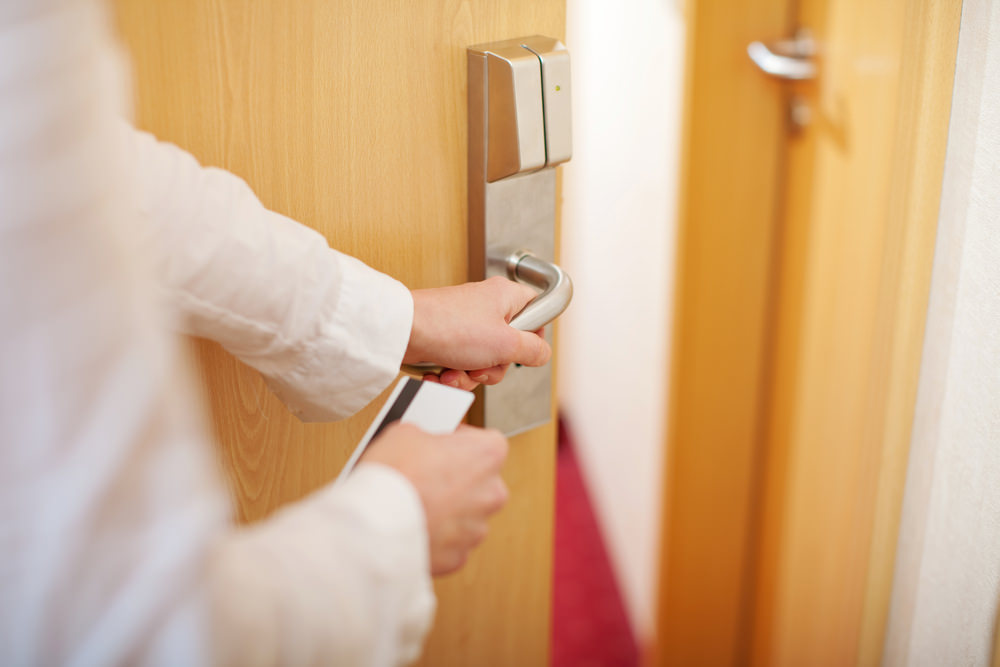
The management must take care that the Safety and Security systems cover the following areas:
- Guest: Protection from crimes such as murder, abduction and health hazards from outsiders, hotel staff, pests, food poisoning etc.
- Staff: Providing staff lockers, insurances, health schemes, provident funds etc. Protective clothing, shoes, fire fighting drills, supply of clean drinking water use of aqua guards, sanitized wash rooms etc.
- Guest luggage: Secure luggage store rooms and proper equipment such as luggage trolley and bell hop trolley should be provided.
- Hotel Equipments: Lifts, Boilers, Kitchen equipment, furniture fitting and building etc. must be protected and for these the Safety and Security should cover up fire safety equipment, bomb threat security system, water floods security system, earthquake security system , safe vault safety and security system etc.
- Protection of raw materials, goods, provisions and groceries etc. For this the safety and security system should cover proper storage and pest control systems, apart from the application of total material management system.
- Protection of Funds:
- Only one person should have access to each cash bank and each bank should be in a separate drawer.
- All transactions should be recorded immediately.
- The cashier should close the cash register drawer after each transaction.
- Cashiers should complete transaction in process before changing currency into different denominations for the guests. Each change request should be handled as a new transaction to avoid confusion.
- A supervisor or a member of the accounting division should occasionally conduct an unscheduled audit of front office cash registers.
- The hotels should have a policy that states where employees should place cash during a transaction.
TYPES OF SECURITY:
- Physical aspect
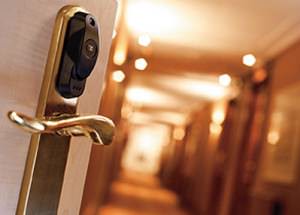
- Safety and Security of persons
- Safety and Security of systems
1) Physical aspect is divided into two parts a) Internal b) External
- a) Internal security
- Against theft
- Fire safety
- Proper lighting
- Safeguarding assets
- Track unwanted guests
- b) External Security
- Proper lighting outside the building
- Proper fencing of the building
- Fencing of pool area to avoid accidents in the night
- Manning of service gates to restrict entry
- Fixing of closed circuit TV cameras
2) Security aspects of persons
- a) Staff
- Effective recruitment and selection
- Identification of staff
- Key control
- Red tag system
- Training
- Locker inspection
- b) Guests:
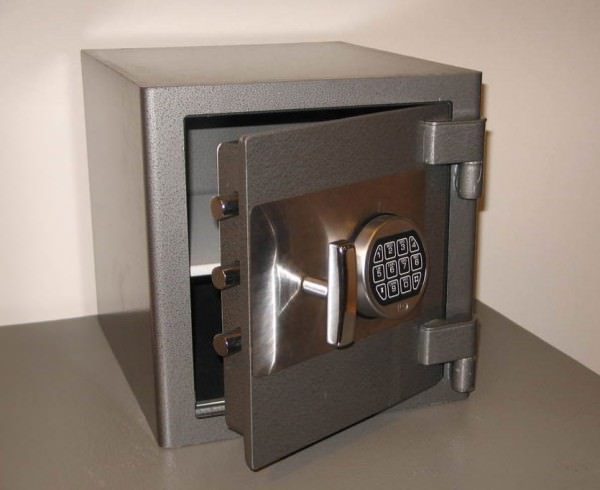
- Check scanty baggage guests
- Guests suspected of taking away hotel property should be charged according to hotel policy
- Guest room security:
- i) Provide wide angle door viewer, dead bolt locks, night torch, chains on doors etc
- ii) Employees should be trained to not give any information about in-house guests to outsiders.
iii)While issuing a duplicate card key ask for identification if in doubt of the guest.
- iv) House keeping staff should never leave keys expose on unattended carts in corridors
3) Security aspects of systems
The term system implies the operations of the hotel eg: all the equipment used for operation, procedures laid down for operations and policies to be followed. Systems procedures and policies if followed properly shall safeguard the assets and increase life span of equipment as well as avoid any breakdown maintenance
This would mean the following:
- Fix duties and responsibilities: Fix duties of staff members so that they don’t interfere with others’ work.
- Make surprise checks
- Staff who have access to liquid assets should be made to sign a bond so that in case of theft the concerned person can easily be caught
- Hiring of some independent security company to check the security system of the hotel
- Record of all losses and missing items immediately
- Inventory control should be proper
- Auditing should be done on a regular basis
- Proper system for cash disbursements should be made
10 important Safety and Security measures necessary in hotels:
- Key Card Locks: Guest room locking systems these days include punch and magnetic key cards which have
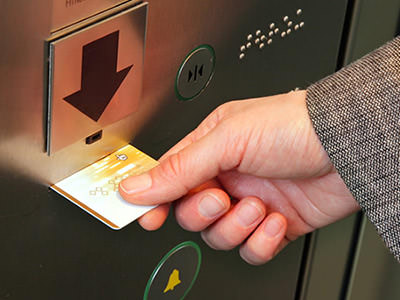 locks with flash memory and other functions. The system can directly be linked with PMS.
locks with flash memory and other functions. The system can directly be linked with PMS. - Security Guards: Trained security guards working 24-hours every day to provide the best in safety and security for the guests.
- Security Cameras: Security cameras with digital technology, intelligent access central system, software interface with CCTV for matching undesirable visitors and criminals, along with metal detectors, and spy cameras and use of biometric readers like hand key reader or face recognition system etc.
- Fire Alarms: Smoke detectors and fire alarms in each guest room and throughout the entire complex that is monitored 24 hours a day, 7 days per week that pinpoints the exact point of the alarm allowing our security staff to respond immediately to the area of any alarm condition.
- Emergency Power: Provision for emergency power in case of a power cut to provide uninterrupted guest service.
- Emergency Manual: Hotels maintain an emergency manual, detailing exits and help in the event of a variety of emergencies.
- Employee Photo ID: For added security, some hotels have employees wearing a photo ID nametag allowing quick identification.
- In-Room Safes: In addition to the safety deposit boxes offered by most hotels at the front desks, Some hotels provide in-room guest safes capable of holding a lap-top computer that use the guest’s own credit card as the key.
- Guest elevators
- Defibrillation Units: A life saving device in case of heart attacks, defibrillation units are starting to be deployed among police and emergency personnel across the nation.
Bomb threat security:
Precautions and measures that may be taken in the above case:
- Security nets and body searches for guests not known to the staff.
- Banqueting suites and other non-public areas should be security checked and locked after use.
- Goods received and bags should be checked and kept tidy.
- If a bomb threat is received via telephone, the telephonist should note carefully what exactly is said, the time of the call received, the accent of the caller and background noise if any. After the alert the GM should stay put in the lobby where he can be reached easily.
- Duties and responsibility of staff during an emergency should be well-defined.
- The hotel should work closely with the police to keep them updated.
- Chamber maids and HK supervisors should be trained to conduct security checks in the guest rooms.
Safety and Security measures for women hotel guests
- Mirrored walls of the guestroom floor elevators so that you can see who is walking behind you.
- Well-lit public areas such as lobby, bars etc.
- Valet parking services to avoid the need of a woman to enter the parking lot.
- Assigning rooms closer to the elevator.
- If a woman traveler is not assigned a room on the special executive floor , hotels most often on request, upgrade her accommodation to that floor without an increase in room rate. The floor is staffed almost 24 hours a day with a concierge.
Safety issues
It is the management’s duty to ensure “safety” in several areas, such as:
- The structure itself
- Installations and fixtures (check electrical, plumbing, air-conditioning and other installations)
- Public and work areas (e.g. slippery floors, hazardous obstacles in traffic areas), safety of furniture, equipment, appliances, and utensils.
This is followed by:
- Health safety (nontoxic cleaning material and detergents used)
- Good quality air (what we breathe, dependent upon the type of equipment, installations and fixtures used, and regular repairs and maintenance)
- Food safety (a whole world in itself including sanitation, food quality, food spoilage, correct handling procedures, allowable and recommended temperatures, etc.), and checking and control procedures.
- An important “preventive measure” is eliminating the possibility of communicating contagious diseases. Even if local regulations do not require it, it is recommended to send food and beverage handlers for a regular medical checkup. Another preventive measure is the formulation and implementation of policies and procedures related to employee accidents which may present a threat to food sanitation.
- Culinary staff who cut themselves accidentally at work, as often happens while slicing food products, have to immediately stop handling food, and report to their Executive Chef and to the person in charge of First Aid in their company (Security or Human Resources Department) for preliminary treatment and handling. Healing and precautionary measures are taken before they are allowed back at their job.
- There are also some basic “dress” requirements for staff involved in food and beverage preparations: e.g. Chefs’ hats (to prevent hair and whatever hair contains to fall into the food), discreet earrings (non-dangling) or no earrings for women, and long hair neatly and securely tied in a bun at the back of the head.
- Of no lesser importance is the safety of work tools and work procedures covering all areas, such as stable ladders, secure shelving, safety shoes, well-fitting work garments, clearly written and complete safety procedures and guidelines from management, safety training, and safety installations and equipment, e.g. fire fighting units, regular maintenance schedules for safety equipment and installations, wider traffic areas (to prevent accidents), adequate staffing, and last but not least, continuous effective training in work procedures.
- All of this necessitates comprehensive planning, the creation of clear policies and work procedures, organization, implementation, training of supervisors and employees, supervision and control.
FIRE in hotel:
Fires in the hotel may result in the injury and loss of life of both the guests and the staff.
Main causes of fire are:
- i) Smoking:
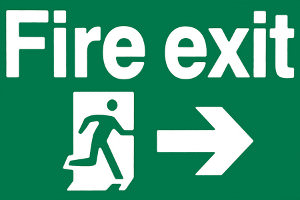
-Smoke only where allowed.
-Put out cigarettes in the right place.
-Sufficient ash trays should be provided in eating places and in rooms, but away from curtains and draperies.
-Educate the guests about fire possibilities due to smoking.
- ii) Defective wiring, faulty appliances and motor and worn out insulation. Such hazards should be immediately reported to the concerned person and such equipment should be immediately repaired
iii) Laundry Areas: Care should be taken to see that none of the electrical equipment is left on after use
iv)Gas leaks: Precautions should be taken against this especially in kitchen areas.
- v) Combustible waste: Combustible material should never be left near the boiler room
- vi) Kitchen: All equipment such as chimneys, exhausts, ventilators, grills, hoods etc. which collect a lot of fume vapor and catch fire easily should be cleaned regularly.
vii) Elevator shafts: These require constant check and inspection. Cigarette butts can ignite the debris and oils that gather at the bottom of elevator shafts.
Types of Fire and fire extinguishers:
Hotel personnel are trained about the fire protection procedure and the types of fire. They must be able to recognize the various type Air contains O2 which is necessary for combustion. Fire has been classified in 5 categories depending on how they can be extinguished-
- Class A Fire- It is the fire of wood, paper, linen and similar dry materials. They are extinguished by cooling and quenching effect of water. The water reduces the temperature of burning substances below their combustion temperature. These are the most frequent and easiest to extinguish when there is an ample water supply and when water can be directed on the combustible material .Keeping the other combustible material wet will limit the spreading of fire
- Class B Fire-These include fires of oil, gasoline, grease and other petroleum product. These fires are extinguished by blanketing the source of burning substances and eliminating the supply of OPetroleum products is lighter than water and will float on water and continue to burn and spread by means of flowing water to other section of the building, hence water is never used for this category.
- Class C Fire-These are the fires of pressurized gases. For e.g. L.P.G., most of the gases are lighter than air but L.P.G. is heavier than air. Water is not to be used for this class of fire.
- Class D Fire-These are fire of metals having low burning temperature for e. g. Na, Mg etc. This class of fire does not exist in the hotel.
- Class E Fire-These are electrical fire. The fire extinguishing agent must not conduct electrical energy which could spread the fire. Electrical fires are usually blanketed and cooled down. Water is a good cooling agent but it also conducts electricity, so it is not used to control or extinguish this class of fire. Electrical fire is usually caused by a part of circuit overheating or by short circuit. Controlling the sizes of electrical fuses and circuit breaker will often minimize this class of fire.
There are 2 systems of fire protection
- Portable fire extinguisher.
- Stationary fire fighting system.
- Portable fire extinguisher
Soda acid fire extinguisher- It is used for class A fire. The extinguishing agent is H2O.The fire extinguisher is a cylinder type of pan in which a rubber or flexible hose is attached to the top. When it is desired to use the extinguisher, it is carried to the fire and inverted. A small bottle of acid usually H2SO4 is spilled when the cylinder is inverted or turn upside down. Powdered sodas, bicarbonate of soda (Baking Soda) is mixed with H2O when the tank is charge or fills with water. The chemical reaction of acid and soda water creates a pressure which forces the water out of the cylinder or tank. The hose is used to direct the flow of water to the fire. It has 2 disadvantages:-
-It must be kept away from freezing
-Acid causes corrogen problem which reduce the life of the tank or cylinder. The corrogen problem has been minimized by replacing the acid with CO2 cartridge. Upon the cylinder inversion the cartridge opens and releases CO2 gas under high pressure. The high pressure gas than forces the water out of cylinder.
CaCl2 fire extinguisher-It is also used on class A fire. . CaCl2 is a salt which when added to water form brine which has very low freezing temperature. CO2 cartridge is used as pressure agent to force H2O and CaCl2 out of the cylinder to the fire. These extinguishers are used where freezing is a potential hazard
Foam type extinguisher-It is used on class B type of fire. The extinguisher is charged with special chemical (Al2SiO4), the chemical spread on the burning material and the solution, blanket the fire by excluding O2.
CO2 fire extinguisher- It is used on C, D and E class of fire. The CO2 types spray a chemical fog towards the fire. The fog quickly excludes the O2 from the burning material and blanket the combustible material.
D.C.P. extinguisher- It can be used on C, D and E class of fire. The most common extinguishing agent is sodium bicarbonate or plain baking soda. The extinguisher is charged with the dry chemical and a small tank of CO2 gas. The CO2 gas exerts pressure on dry chemical and forces it out of a nozzle directly to the fire. The powder strict the fire and the heat from the fire breaks down the chemical which releases CO2 gas on a large scale which helps in extinguishing the fire.
- Stationary fire fighting system
Automatic sprinklers-It is generally mounted just below the ceiling height with a temperature detector or smoke detector, attached with each sprinkler. The temperature from the fire melts the fusible link on the detector, which opens a water valve. The water is then sprayed on the ceiling and falls on the floor, extinguishing the fire. If the fire area should spread, more sprinklers are automatically opened, thus confining the fire to a small area. The temperature detector can be purchased for different activating temperature. The high temperature detectors are often used in kitchens.
Fire Hose System-It is a semi portable system. In this system the fire hose box is permanently located but the flexible hose can be moved to various distances throughout the building. The hose used to fight fire within a building should be of linen type. The linen allows some water seepage through it which will prevent its burning when in use.
HANDLING EMERGENCY SITUATIONS
Apart from fire and bomb threat etc. the front office staff at some point of time have to handle a lot of unusual situations also. Some such situations may be death and illness of guests, theft in hotels etc and many others.
1) Death of a guest in the hotel :
Once the information comes to the front desk it should directly be reported to the front office manager.
The front office manager will then report it to the GM or resident manager
The security manager should also be informed immediately
The police is informed and the hotel doctor is summoned who will check and confirm the death
Meanwhile the hotel will locate the residential address of the deceased and will inform the relatives.
Once the police complete all formalities and activities and gives the permission, the dead body is fully covered and then removed from the room on a stretcher. For this purpose the service elevator and not the guest elevator is used
A death certificate is obtained from the doctor
A report should be prepared as to who informed of the death, time,, room number and date of death. In case there is any luggage of the deceased in the room a list should be prepared and the luggage should be kept in the luggage room and the person performing this activity should sign this report
The guest room is locked and sealed.
After obtaining clearance from the police the room is opened and thoroughly disinfected and spring cleaned and only after permission of the police and subsequent permission of the GM or resident manager the room should be sold.
Some important facts to be kept in mind are:
Do not enter the room alone always take the lobby manager and security officer with you
In case you are aware that the deceased was under the treatment of a specific doctor, the same should be called instead of the hotel doctor. His physician will also be helpful in knowing and notifying the incident to the relatives and people known to him
Do not disturb the body or touch anything before the arrival of the police as this may be a murder or suicide case.
2) Handling accident cases:
- A knowledge of first aid would come very handy in such situations. In general the following points should be taken care of
- Remove the person who has met with accident from the site of accident {as early as possible and take him to a more comfortable area, use a stretcher in case the need be.
- Call the doctor and if possible give him the details of accident and gravity of the accident.
- Take someone along with you to the site of the accident as you may need help
- Keep alert you must serve the victim immediately by providing first aid
- Try to protect your establishment from any false allegations
- Prepare a full report of the whole accident giving details of the date and time who reported the incident, room no., site of the accident etc. Also make your comments as to the reason of the accident and how could it have been prevented and what action is to be taken to avoid the same in the future.
The accident book:
- An accident book is usually maintained in all organizations and the receptionist should record all details of accidents which have occurred to employees whilst carrying out their daily activities.
- The book must be kept in a place easily accessible by any injured person or a person bonafide
- Particulars of an accident may be entered here in either by the injured person himself or by a person acting on his behalf
- The accident book when filled up should be preserved for a period of three years after the date of the last entry
- Every employer is required to take steps to investigate the circumstances of the accident recorded and if there happens to be any discrepancy between the circumstances found by him and the entry made, he is required to record the circumstances so found.
3) Situation of Theft:
Theft is divided into four categories:
- Theft by employees of the hotel can be avoided by:
Work business and personal references should be checked before the employee is hired.
A detailed record of all employees who enter the guest room such as chamber maids bellboys room boys maintenance etc
All hotel keys should be returned to the department concerned and no employee should be allowed to take keys out of the hotel’s premises.
- Damage of hotel property by the guest can be avoided by:
The hotel staff should identify the main cause for the damage.
If the damage is appears to be done intentionally the hotel can ask the guest to pay compensation for the same. For this it is necessary that the front desk is well versed with the cost of the damaged item.
III. Theft of hotel property by the guest:
Can be avoided by taking the following steps:
- Installing automatic locks on the guest room doors
- Appointing a security officer who would walk and take rounds at regular intervals
- Inform guests to use the safe vault of the hotel and not to keep valuables in the guest room
- Keep a watch on walk in as their likelihood of being a thief is more as compared to a guest who has undergone a process of making a reservation in the hotel
- Avoid giving room numbers of resident guests to visitors or over the telephone callers.
- In case the guest loses his key and asks housekeeping to open the room door for them, HK should direct them to front desk
- Master key should be kept under strict supervision and control
- Theft by outside visitors can be avoided by:
- being aware of suspicious persons
- regular and irregular schedule of vigil and security rounds
- Stagger lunch and rest periods of employees so as to keep one person on duty on each floor at all times
- Instruct eh telephone operator not to connect calls to the guest room incase the request is made by the caller by room number. The receptionist should insist on knowing the name of the guest who the caller wishes to speak to.
- Guest should be informed to keep the balcony door closed to avoid anyone entering the rooms from the balcony
- Closed circuit televisions should be used
4) Situation of illness and epidemics:
The receptionist may be called for assistance during sickness of a guest.
Patient should be advised to consult the house physician but in case the guest has his own physician the same should be called.
Housekeeping needs to be notified about the sickness and instructions if any
If the case of serious sickness, the guest should be moved to a nursing home
During epidemics all precautionary measures especially in food and beverage service area should be followed.
5) Handling a drunk guest :
The guest should be removed from the lobby as early as possible but being careful not to irritate/offend him.
Preferably taken to the back office or to his room.
If he behaves unruly, the hotel security must be called.
Safe deposit facility in the hotel for security of guests’ valuables:
It is the responsibility of management to develop and maintain proper safe deposit procedures for its property.
If this facility is available for guests, notices regarding it should be put up in various conspicuous/noticeable places in the hotel and also should be mentioned to the guest.
Safe deposit boxes should be located in an area, in vicinity of the front desk and which has limited access. Unauthorized guests or personnel should not be permitted inside the area.
Front office staff should be well-versed with the procedures regarding safe deposit boxes. Strict control should be maintained for the storage and issue of safe deposit keys.
At any point of time there should be only one key issued for each safe even if more than one person is using the safe.
Two keys are required to open a safe deposit box: one being the guest’s key and the other being the control key/guard key put in by the cashier/safe deposit attendant.
After the verification f the identity of the guest, the safe deposit attendant/cashier should accompany the guest to the safe deposit area where in clear sight should make use of the control key and the guest’s key to open the safe.
Sometimes the hotel may not be able to meet the demand for individual safe box; in that case a large box containing the belongings of more than one guest is used. Each guest’s belongings are put in an envelope which is sealed. The key to this box is stored in a secure place and a log is maintained which records an entry each time the key is used to open the box. Contact us for more information.
